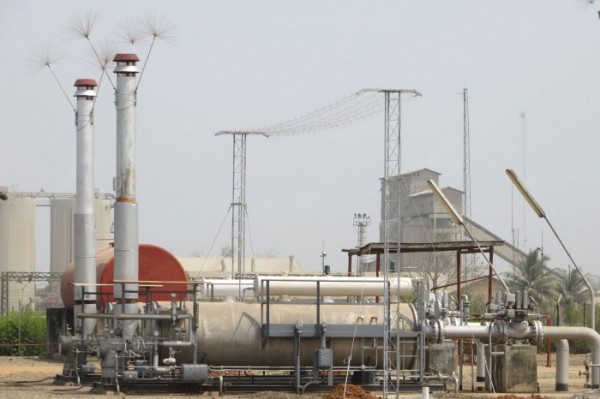- We Prevent Lightning Related Problems.

The Original Lightning Protection for Floating Roof Tanks
May 1, 2014
Lightning Protection: Hitachi is Sharing the Knowledge
May 22, 2014Lightning Protection: Maintenance, Maintenance, Maintenance!

Lightning Protection
Lightning Protection Blog
Week 85 | May 15, 2014
In April, I did a blog on inspection and maintenance titled “April Showers Bring LIGHTNING: Protect, Inspect and Maintain!” and the folks at Fuel Marketer News were intrigued, asking me to do a more expansive piece on the topic. Considering that I believe this to be one of the more important topics second only to implementing a lightning protection solution to begin with, of course I agreed.
Once you have installed a lightning protection system into your facility, it must be inspected and maintained like any other piece of equipment. It is imperative. For your reading pleasure, herewith the article “Maintenance, Maintenance, Maintenance” featured in Fuel Marketer News.
Enjoy,
The LightningDiva@Large
Fuel Marketer News, May 2014
Maintenance, Maintenance, Maintenance!
When it comes to viable lightning protection solutions, first rule is, you must have it! If you do have it, the equipment needs to be in good working order to be effective. Like any other technology or equipment, it needs to be installed properly, inspected and maintained.
Now, when dealing with the extraction, refining and storage of combustible liquids, as widely practiced in the Oil and Gas industry, do you really want to take the chance of your systems not working? I think not. Inspection is imperative and should be part of responsible and good risk management and emergency best practices plan for business continuance.
The summer months across the Northern Hemisphere can be brutal, and more so in recent years, especially in the United States. The past few summers (actually late Spring, Summer and early Falls) have proven to be challenging where lightning is concerned. In 2013 more than 100,000 lightning strikes rained down on Oregon in just two days, sparking various wildfires throughout the central and southern parts of the state. Washington has also been a victim of these powerful strikes—over 60 wildfires ignited after a lightning storm early August. Colorado has literally blown up in the past 4 years, summer after summer, and in the last week of April into May, along the Gulf Coast both Texas and Louisiana experienced three tank explosions in a seven day span. States like New Hampshire and Main reported the heaviest lightning in recorded history.
In addition, last summer North Dakota’s oil fields experienced five fires that were attributed to lightning. One in particular struck a saltwater disposal well damaging four tanks containing 380 barrels of saltwater and 20 barrels of oil and totaling over $100,000 in damages.
Subsequently, not only did a lightning strike ignite a fire at a Southern California Edison Power Plant, the entire plant was shut down and caused over 120,000 power outages across Visalia, California. Incidents like these should remind us just how important it is to check and recheck equipment before the lightning season, as well as with each weather event and/or natural disaster that occurs during the year.
A damaged lightning protection system is as dangerous as having no lightning protection at all. Of course once an event like this takes place, the emphasis turns to getting up and running as soon as possible. Many forget about checking the equipment. Take note, a good emergency maintenance plan should include checking your lightning protection equipment. You can’t neglect taking a good look around to make sure the event did not produce any lingering, unnoticed damage. Have you checked your lightning protection systems, and other equipment for that matter?
Good maintenance means you must inspect the system, which includes direct strike protection as well as grounding and surge solutions. How well do you maintain your equipment? What steps do you take to ensure that it is working properly? Does your company ignore it and wait until something goes wrong?
While we have several clients that after an event will call and request we come out to inspect their systems and others who self-inspect and have ascertained that an incident has occurred and the system does in fact need repair and take care of it immediately. Sadly, there are those who do not examine their solution at all and are shocked when a lightning strike hits them and bewildered as to why. Once on site we ascertain that it was because they did not check their installations and damage had impacted the solution. Another common issue is meantime-between-failure, which is a ticking time bomb. Entire operations are knocked off-line because electronic equipment, unbeknownst to them, was damaged repeatedly during a previous events due to no or damaged surge protection. A piece of equipment, that cost hundreds of thousands of dollars and in some cases millions of dollars stopped working years before it should have. In another case, one end user did not realize that a mudslide had affected the positioning of a Chem-Rod® grounding system, and on another occasion a tree had fallen on a Dissipation Array®System (DAS®). These things happen all the time and rather than find out the hard way, it is better to check and make proactive reviewing a regular practice.
Proactive measures are the best measures. To avoid instances such as this, at Lightning Eliminators, DAS users are required to have a recertification annually in order to validate their efficiency. If the recertification by Lightning Eliminators is not conducted, the No-Strike Warranty is no longer in place and there is no certainty that the system will function properly when needed.
Floating Roof Tanks (FRT) are another source of where a proactive approach is optimal.
Although maintaining your lightning protection equipment takes some time and effort, it is a welcome relief to many companies that have FRT’s to have done so. Those who have not maintained or inspected them learn the hard way and have paid substantially for the failure to do so. The Retractable Grounding Assembly (RGA®) is a grounding solution that preempts more antiquated parts that are known for frequently being damaged like metal shunts and wires installed as grounding solutions, so clients that use it have less to maintain when they implement the RGA solution to begin with. But even so, we insist that when an event happens, they review the installation.
Shunts often break, and wires often tangle, and when that happens, floating roof tanks can actually become more vulnerable to fire from lightning. And, it does not even have to be a direct strike. When the grounding connection is compromised, even a nearby strike can cause the electrons on the roof of a tank to create a spark. With the challenges of improper grounding maintenance, and the fact that even nearby lightning poses a risk, it is no wonder many fires at floating roof tanks are lightning related. It is also another example why maintenance, and attention to potential risk, is essential. Again, RGA systems require routine maintenance and inspection like any other piece of hardware, but they are not as easily compromised and require a fraction of the repair and replacement work seen with other systems. So this is “out of the box” a much better solution for the FRTs.
A newer and more dangerous occurrence plagues the upstream oil and gas community. With the advent of non-metallic and lined tanks associated with Salt Water Disposal (SWD) tanks and the fracking boom; electrical discharge & subsequent explosive detonation of the ullage inside chemical storage tanks has become an issue. High electrostatic fields produced during thunder and lightning storms create vulnerability through both primary and secondary sources causing arcing both internally and externally which can go Boom! I hate to repeat myself, but regardless of the tank or repository, INSPECT, INSPECT, INSPECT – MAINTAIN, MAINTAIN, MAINTAIN!
We have noticed many Tank Batteries have been using solutions that include points. Well the first order of business is, don’t use points. Any additional sharp metallic object (wires, wire brushes, etc.) when placed inside the tank, especially in the vapor space above the stored fluid, can serve to enhance field strengths during lightning events and initiate corona/arcing. Secondly, points can be more easily damaged. We promote using a smooth surface solution right out of the gate.
At the end of the day, whether upstream or downstream; platform, rig, tank farm, tank battery, refinery, pipeline or the buildings that house your operations equipment and/or sensitive electronics, it all must be protected and that protection needs to be checked continuously in order to work.
As always if you have any questions or need additional information please feel free to contact me at LightningDiva@lecglobal.com
Be careful out there! Visit www.lightningprotection.com for all your lightning protection needs. Follow us on Twitter, Facebook and LinkedIn for more information and updates as well as some great photos.

